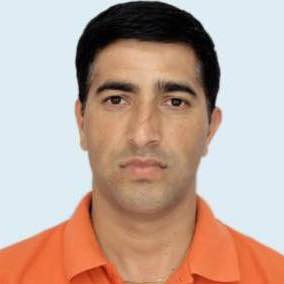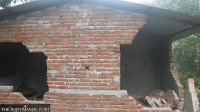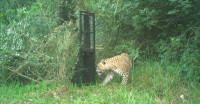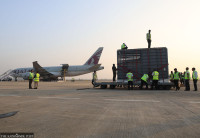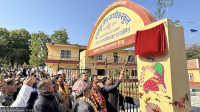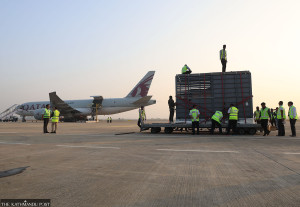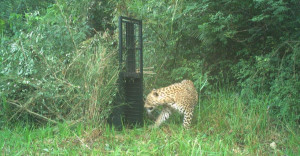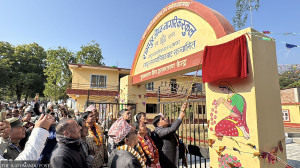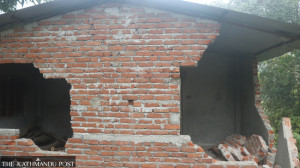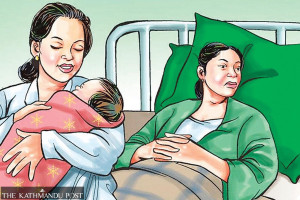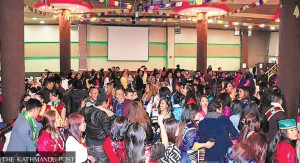Lumbini Province
Over 7,000 trees felled for Butwal–Gorusinghe road widening
Highway loses shade and community spaces, leaving locals concerned.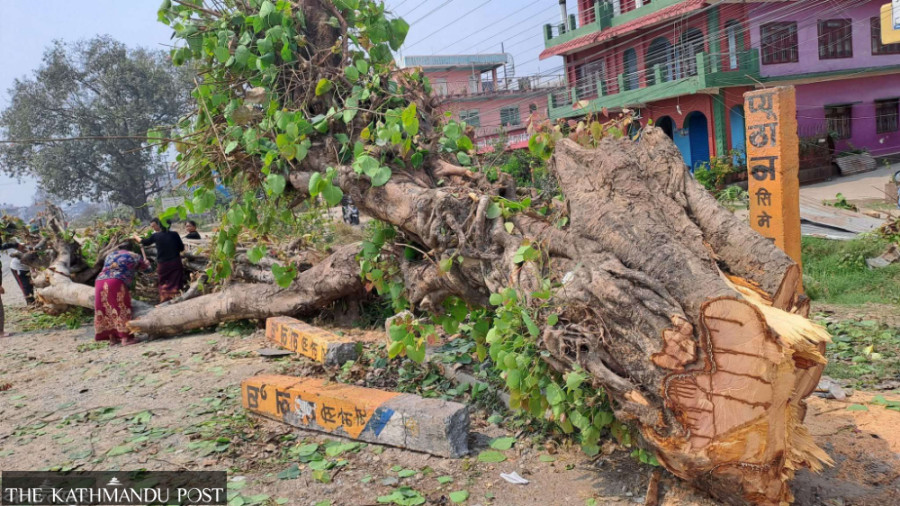
Ghanashyam Gautam
More than 7,000 trees have been felled along the Butwal–Gorusinghe road section of the East-West Highway for widening, leaving the once tree-shaded roadside barren. The removal has also destroyed hundreds of resting sheds built under large trees, erasing long-standing community spaces.
According to the project office, 7,175 trees were cut down along the 31-km stretch. To compensate, the project has committed to planting 10 new saplings for every tree felled, with a target of 71,000. For this, it has already paid Rs471 million to the Department of Forests through various divisional offices. The cost also includes five years of care for the new trees.
Despite this arrangement, no plantation has started. The roadside, once lined with shade-giving trees, now looks desolate.
Seventy-six-year-old Kalawati Gautam of Sainamaina Municipality-1 said she planted banyan and peepal trees at Kalikachowk in 1984. Twelve years ago, she spent Rs50,000 of her own money to build a chowparis (traditional resting place) beneath them. Locals worshipped at the trees every Saturday, and passengers resting in the shed found relief from the heat.
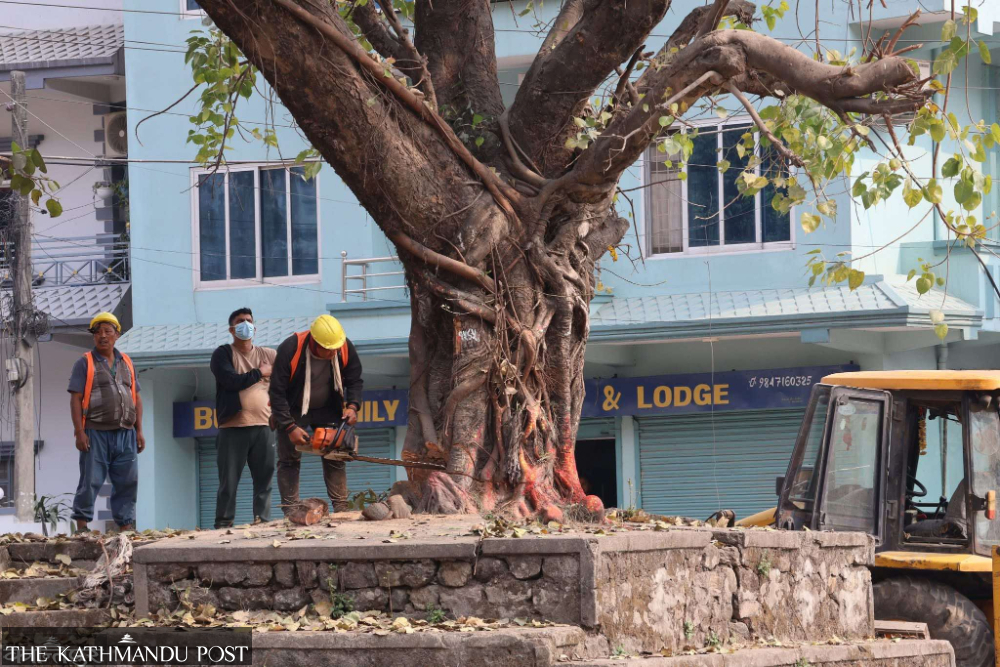
“The peepal I raised with care was cut down in the name of road widening. Watching them disappear broke my heart,” she said. “The project promised to replant, but nothing has been done. The road looks lifeless. With the wider highway, there’s not even space left for new banyan and peepal trees. Even if they plant elsewhere, we won’t live to see them grow.”
The Butwal–Chandrauta road is being expanded from two lanes to four. Of the felled trees, Rupandehi district alone accounted for 2,613 in Butwal Sub-metropolitan City and Sainamaina Municipality, and 1,326 in Kanchan Rural Municipality. In Kapilvastu, 3,236 trees were removed in ward 4 and Gorusinghe areas, project chief and engineer Kushalta Neupane said.
“In total, 7,175 trees have been cut,” Neupane said. “The project has already paid Rs471 million to the Department of Forests for plantation and maintenance. For each felled tree, 10 new ones must be planted. The department is to coordinate with road division offices for this.”
The Butwal–Bhairahawa and Bhairahawa–Lumbini sections faced similar tree losses during earlier road expansions, but replantation has not been carried out even five years later.
Environmental campaigner Yubaraj Kandel said Nepal fails to prioritise tree conservation in infrastructure projects. “In developed countries, trees along roads are often transplanted or relocated during expansion,” he said. “Here, trees are the first casualty, and little effort is made for replantation. This applies not only to highways and cities but also to rural road projects, where ancient trees and chowparis are cut down without alternatives.”
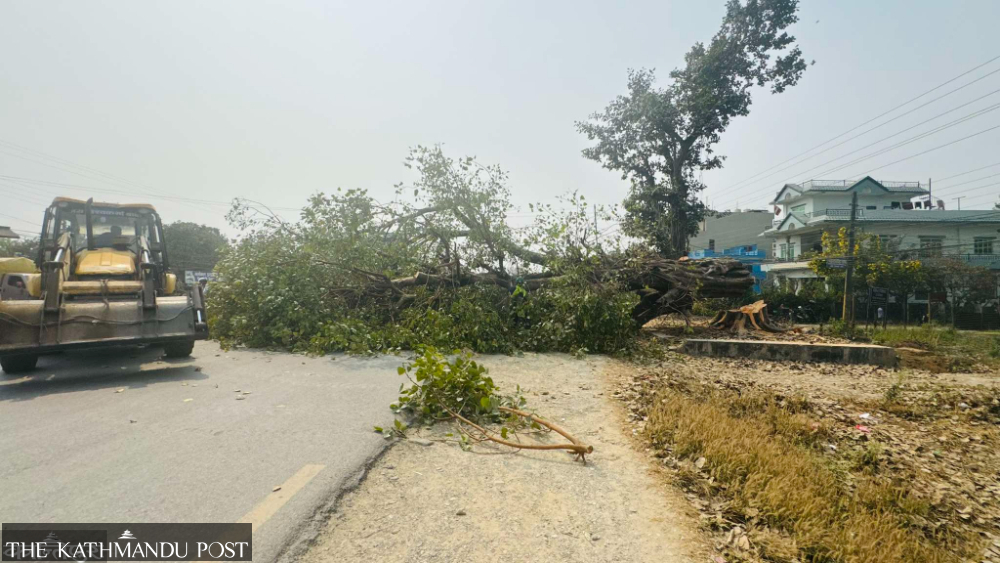
During the Butwal–Narayanghat road expansion, nearly 100,000 trees were felled. Although plantations were started in Kapilvastu’s community forests with the project’s financial support, no such efforts have been made along the Butwal–Gorusinghe and Butwal–Bhairahawa roads.
Madan Dhungana, an officer at the Kapilvastu Division Forest Office, said the plantation has reached the final stage in some areas. “In Banganga Municipality-10’s Patna and Kotariya, and in community forests of Mayadevi Rural Municipality, saplings are being planted across 57 hectares to replace the road trees,” he said.
Butwal–Gorusinghe plantation, however, will take time. Prabin Bidari, senior divisional forest officer of Rupandehi, said the lack of land has delayed work. “We need at least 50 hectares, but no land is available. Without it, replantation cannot begin,” he said.
The Butwal–Gorusinghe expansion is being carried out by the Chinese firm Shaanxi Construction Engineering Group Corporation in a joint venture with Chitwan-based Ashish Nirman Sewa. The contract, worth Rs13.55 billion, was signed in mid-2024 and came into effect on October 20, 2024.. So far, about 13 percent progress has been made, according to project officials.
Contractor representative Bijay Gauli said the project must be completed within three years. “Of 30 bridges to be built, 14 have had foundations completed, and diversion works are ongoing for nine,” he said. “With foundations done, major bridge construction is moving ahead.”
In total, 149 culverts and six underpasses or overpasses are planned. The road will have a width of 50 metres in urban areas, 37 metres in semi-urban zones, and 24 metres in forest sections.
The expansion covers two phases: the first from Butwal to Gorusinghe (31 km), and the second from Gorusinghe to Chandrauta (19 km). Work on the second phase has not started. Field offices have been set up in Kapilvastu, where bridge and culvert construction is moving rapidly.
The absence of tree plantation continues to worry locals and environmentalists. They fear the highway’s expansion may bring better transport facilities, but at the cost of its ecological and cultural identity.




 9.12°C Kathmandu
9.12°C Kathmandu